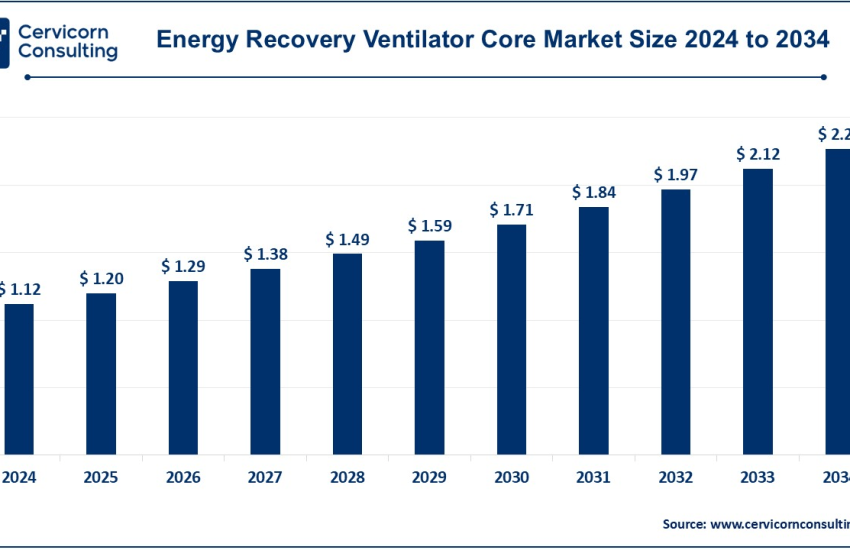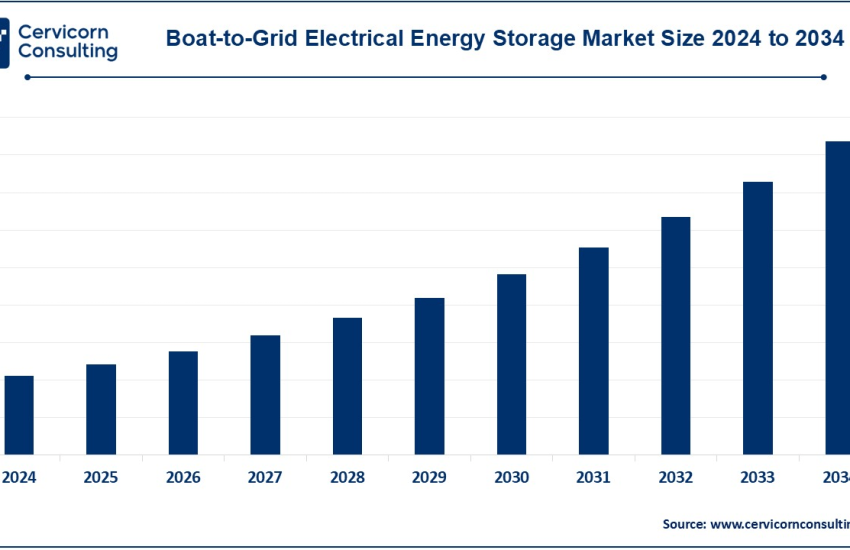Solar Tracker Market Growth Drivers, Trends, Key Players and Regional Insights by 2034
Solar Tracker Market Size
The global solar tracker market size was worth USD 10.67 billion in 2024 and is anticipated to expand to around USD 42.43 billion by 2034, registering a compound annual growth rate (CAGR) of 25.07% from 2025 to 2034.
What is the Solar Tracker Market?
The solar tracker market encompasses the design, manufacturing, sales, and service of mechanical systems that rotate or tilt PV modules to follow the sun’s movement. These systems are typically classified into two categories:
- Single-axis trackers, which rotate on one axis (usually east–west) and are most commonly used in utility-scale solar plants.
- Dual-axis trackers, which move in two directions and are capable of tracking both the sun’s altitude and azimuth, offering higher precision and efficiency.
The market includes not only the hardware (foundations, drive mechanisms, motors, sensors, and controllers) but also software systems for predictive maintenance, performance optimization, and remote monitoring. As global demand for clean energy surges, the tracker market has become a critical sub-sector of the solar energy value chain, offering higher efficiency, land-use optimization, and improved financial returns for solar investors.
Get a Free Sample: https://www.cervicornconsulting.com/sample/2557
Solar Tracker Market Growth Factors
The solar tracker market is propelled by declining PV module and balance-of-system costs, which make the incremental capital expenditure of trackers more economically viable due to their significant yield gains. Increasing utility-scale solar deployment, supportive policy frameworks (such as the U.S. Inflation Reduction Act, European renewable energy directives, and India’s PLI scheme), and advances in lightweight modular designs are driving adoption. Furthermore, the growing emphasis on grid integration, higher capacity factors, and new financing models such as performance guarantees and manufacturer-backed warranties have further accelerated market penetration. Collectively, these factors contribute to a robust upward trajectory, with the tracker market expanding rapidly across North America, Latin America, Europe, and Asia.
Why Solar Trackers Are Important
- Enhanced Energy Yield: Trackers increase power generation by 10–25% compared to fixed-tilt systems, improving a solar plant’s overall return on investment and reducing the levelized cost of energy (LCOE).
- Optimal Land Utilization: By improving energy capture per hectare, trackers allow developers to maximize output even on limited or expensive land parcels.
- Grid-Friendly Generation: Trackers flatten the daily production curve, offering a steadier energy output that can better align with peak demand hours.
- Facilitating Large-Scale Projects: For multi-gigawatt solar farms, trackers are essential to achieve competitive power purchase agreement (PPA) pricing and grid compliance.
Trackers are thus not only mechanical devices but strategic tools that enhance the viability and competitiveness of solar energy in modern grids.
Solar Tracker Market — Top Companies
Below are detailed profiles of five key players that have established themselves in the global solar tracker ecosystem.
1. Trina Solar Limited
Specialization: Trina Solar operates across the full photovoltaic value chain, from module production to mounting systems, trackers, energy storage, and integrated smart PV solutions.
Key Focus Areas: High-efficiency solar modules, integrated PV + storage solutions, and tracker-based system integration for utility-scale applications.
Notable Features: Trina’s vertical integration allows the company to bundle solar modules with its proprietary TrinaTracker systems and digital monitoring platforms. The company focuses heavily on research and development, particularly in high-efficiency cells and smart tracking algorithms.
2024 Revenue / Market Share: Trina Solar reported approximately USD 11–12 billion in 2024 revenue, making it one of the world’s largest PV suppliers. Tracker systems represent a significant portion of its large-scale project solutions business.
Global Presence: Headquartered in China, Trina has an extensive international footprint, with manufacturing and sales operations across Asia, Europe, the Americas, Africa, and the Middle East.
2. Titan Tracker
Specialization: Titan Tracker, based in Spain, is known for its dual-axis tracking systems with precision mechanical designs, originally focused on concentrated photovoltaic (CPV) and high-accuracy solar applications.
Key Focus Areas: High-precision dual-axis geometries, structural robustness, and tracker systems optimized for concentrated or high-irradiance solar fields.
Notable Features: The company’s patented geometric architecture ensures high accuracy and reliability, making its systems ideal for CPV and research-grade solar installations.
2024 Revenue / Market Share: As a privately held firm, Titan Tracker does not publicly disclose detailed financials; it remains a specialized provider in the niche dual-axis segment.
Global Presence: With headquarters in Spain, Titan Tracker has project references in Europe and international markets through licensing agreements and engineering collaborations.
3. SunPower Corporation
Specialization: SunPower is a U.S.-based company historically recognized for its high-efficiency solar panels, system integration, and distributed generation services.
Key Focus Areas: Residential and commercial solar solutions, energy storage integration, and digital energy services.
Notable Features: SunPower’s legacy lies in its high-efficiency Maxeon solar cells and turnkey solar solutions. The company is currently undergoing restructuring to focus more on service-based business models and residential energy solutions.
2024 Revenue / Market Share: SunPower’s financial performance in 2024 was affected by restructuring measures, with reduced exposure to tracker hardware compared to its earlier system-integration focus.
Global Presence: Primarily active in North America, SunPower has been a household name in residential and commercial solar markets for over two decades.
4. Soltec Power Holdings
Specialization: Soltec, headquartered in Spain, specializes in single-axis tracker manufacturing, engineering, and EPC services for utility-scale solar plants.
Key Focus Areas: Manufacturing of single-axis trackers, project development, and maintenance services.
Notable Features: Soltec’s integrated business model includes manufacturing, project development, and operations, allowing it to maintain control over quality and project delivery.
2024 Revenue / Market Share: Soltec reported revenues in the range of EUR 200–300 million in 2024, with its tracker segment accounting for a substantial share of total income.
Global Presence: Soltec has a strong presence in Latin America (particularly Chile and Brazil), as well as in Europe, North America, and select Asian markets.
5. Powerway Renewable Energy Co., Ltd.
Specialization: Powerway Renewable Energy, based in China, supplies complete PV system components, including trackers, racking systems, and inverters.
Key Focus Areas: PV mounting and tracking systems, EPC services, and turnkey solar solutions for emerging markets.
Notable Features: Powerway has positioned itself as a one-stop solar solutions provider with a growing presence in export markets such as Southeast Asia and Africa.
2024 Revenue / Market Share: Publicly available estimates place Powerway’s 2024 revenue in the single-digit million-dollar range, making it a mid-tier regional player compared to global giants.
Global Presence: Powerway’s operations are concentrated in Asia, with expanding project footprints in ASEAN and African countries.
Leading Trends and Their Impact
- Utility-Scale Project Dominance:
The global trend toward massive utility-scale solar installations is fueling the need for trackers that can optimize energy generation over large areas. As repowering projects emerge in mature markets, developers increasingly replace fixed-tilt systems with trackers to enhance yields. - Digitalization and Predictive Maintenance:
Advanced sensors, IoT integration, and AI-based predictive maintenance systems are transforming trackers into smart assets. Real-time data analytics reduce downtime, minimize manual inspections, and extend system lifespans. - Localization and Supply Chain Diversification:
Policies like the U.S. Inflation Reduction Act encourage local manufacturing and sourcing. As a result, tracker companies are setting up regional manufacturing hubs to qualify for domestic content bonuses and minimize logistics costs. - Modular and Lightweight Designs:
Innovations in structural design—using fewer moving parts and pre-assembled modules—reduce installation time and costs. These design improvements make trackers more accessible for smaller developers and projects in challenging terrains. - Intense Price Competition and Market Consolidation:
With more entrants and manufacturing capacity worldwide, tracker prices have declined steadily. Larger companies with integrated supply chains are consolidating market share, while smaller firms focus on specialized applications or regional markets. - Hybrid PV + Storage Systems:
The growing coupling of solar with battery energy storage systems (BESS) complements tracker deployment. Trackers help align solar generation profiles with peak storage charging windows, maximizing system value.
Successful Examples of Solar Tracker Implementation
United States Utility-Scale Projects
The U.S. has witnessed a surge in tracker installations following the Inflation Reduction Act. Many large-scale solar farms across Texas, California, and Arizona have adopted single-axis tracking systems to increase capacity factors and ensure project bankability. Trackers have become a default specification for most new utility-scale solar projects.
Soltec Projects in Latin America
Soltec has delivered hundreds of megawatts of single-axis trackers in Chile, Brazil, and Mexico. These regions benefit from high solar irradiance, making trackers an effective way to boost generation and maintain profitability even with lower PPA tariffs.
Trina Solar’s Integrated Systems
Trina Solar has supplied integrated tracker and module solutions to several gigawatt-scale projects in China and the Middle East. By combining high-efficiency panels with smart tracking algorithms, Trina’s systems enhance energy output while reducing operational risk.
European Repowering Projects
In Europe, particularly Spain and Italy, repowering initiatives involve replacing outdated fixed-tilt systems with tracker-based solutions to maximize land use and energy generation under updated renewable targets.
Precision CPV Installations by Titan Tracker
Titan Tracker’s high-precision dual-axis systems are used in specialized concentrated PV research facilities and testbeds across Europe. These projects showcase the importance of tracking precision for high-concentration solar applications.
Global Regional Analysis — Government Initiatives and Policies
North America
- United States: The Inflation Reduction Act (IRA) offers extensive tax credits and domestic content bonuses for renewable energy projects. This legislation has significantly boosted demand for U.S.-made trackers and created incentives for companies to localize production.
- Canada: Federal and provincial renewable programs, along with net-zero commitments, encourage solar expansion and the use of performance-optimized technologies like trackers.
Europe
- REPowerEU Plan: The European Union’s strategy to reduce dependency on fossil fuels has set ambitious solar deployment targets. Countries such as Spain, Italy, and Germany offer incentives and tenders that prioritize high-efficiency solar solutions, including trackers.
- Local Manufacturing Support: Several EU states have introduced measures to encourage local production of solar components, helping regional firms like Soltec and Titan Tracker remain competitive.
Asia-Pacific
- China: With vast manufacturing capacity, China dominates global tracker production. Government incentives continue to support domestic renewable installations and exports of tracker technologies to other regions.
- India: The Indian government’s Production Linked Incentive (PLI) schemes and massive solar tender programs under MNRE are accelerating tracker adoption in large utility-scale projects. Trackers are especially favored in arid regions such as Rajasthan and Gujarat.
- Southeast Asia: Emerging solar markets such as Vietnam, Thailand, and the Philippines are adopting trackers for utility projects as part of their renewable transition strategies.
Latin America
Latin America remains a key growth region due to abundant solar resources and improving regulatory frameworks. Countries like Brazil, Chile, and Mexico have seen significant tracker installations driven by competitive energy auctions, private PPAs, and lower financing costs.
Middle East and Africa
Governments in Saudi Arabia, the UAE, and South Africa are pushing large-scale solar initiatives to diversify energy portfolios. Trackers are increasingly being adopted in desert regions due to high direct normal irradiance (DNI), which enhances the efficiency of both PV and CSP systems.
Key Takeaways for Industry Stakeholders
- Developers should evaluate site-specific conditions (irradiance, terrain, soil type, and wind load) to determine the optimal tracker configuration for maximum returns.
- Investors should monitor localization policies and supply chain dynamics, as regional manufacturing incentives can influence pricing and project viability.
- Policymakers can accelerate renewable deployment by promoting technology-neutral auctions that reward higher yield and capacity factor performance, rather than purely installed capacity.
- Manufacturers need to continue innovation in lightweight design, predictive maintenance, and AI-driven control systems to remain competitive in this high-growth sector.
To Get Detailed Overview, Contact Us: https://www.cervicornconsulting.com/contact-us
Read Report: Ethanol Market Growth Drivers, Trends, Key Players, and Regional Insights by 2034


